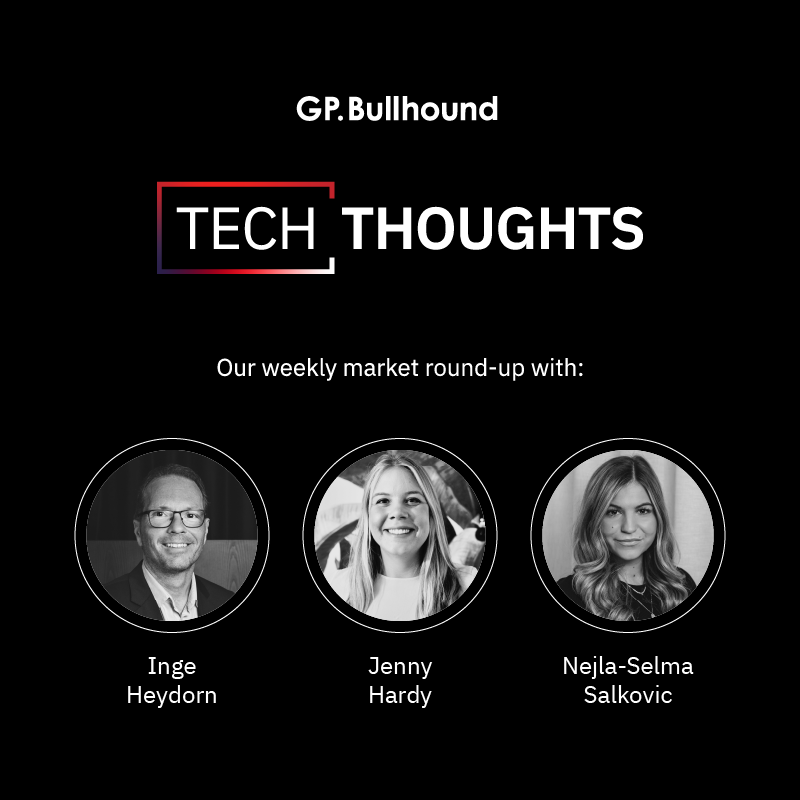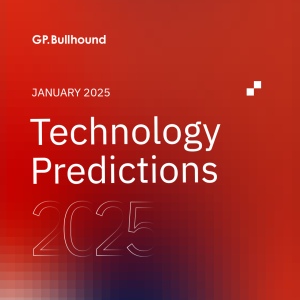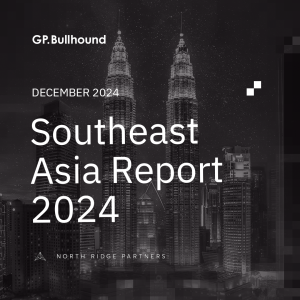Tech Thoughts Newsletter – 3 November 2023.

Market: The Fed is sticking to the playbook, which helped to turn the market focus back to fundamentals and, for us, good results in AMD and Arista, driving shares up and helping portfolio performance.
Portfolio: We added to Nvidia’s weakness this week and think numbers remain too low into the quarter.
Nvidia isn’t the only AI game in town – AMD and Arista are both delivering
- AMD (owned) beat on revenues and EPS in the quarter. The Q4 headline guide, at first glance, was damp, but it’s all about the details, and the colour on the call around the mix/ramp of the MI300X GPU (the Nvidia alternative) was the standout positive. AMD said: “Based on the rapid progress we are making with our AI road map execution and purchase commitments from cloud customers, we now expect Data Center GPU revenue to be approximately $400 million in the fourth quarter and exceed $2 billion in 2024 as revenue ramps throughout the year. This growth would make MI300 the fastest product to ramp to $1 billion in sales in AMD history.”
- The $400m in Q4 will mostly be HPC – AMD’s MI300A chip – that’s already shipping for the El Capitan supercomputer. But the bulk of the 2024 volume will be MI300X – AMD’s GPU-only chip, ramping through the year. That’s an extraordinary number coming from nothing.
- AMD say they’ve been engaging on MI300X broadly – we already know they’ve won Oracle (that came out last week) – but we assume they’re selling meaningful volume into all the hyperscalers. We’ve said before that there are lots of reasons why AI players will not want to be tied into Nvidia – everyone is motivated to look for a credible alternative – particularly in the bigger inference market – to avoid being tied into one very powerful supplier. More importantly, Nvidia is currently supply-constrained – and so many customers need help to get their hands on Nvidia H100 chips. AMD is the most credible alternative here.
- The 2024 number could be much more significant than $2bn (closer to $4bn) – given that Nvidia will be supply-constrained on both the H100 and the new B100 until Q4 next year. It’s good news for TSMC, too, who make AMD’s (and Nvidia’s) chips.
- Arista (owned) reported a decent beat and raised its full-year guide (again) – highlighting both strong enterprise and cloud/AI.
- After 33% revenue growth guidance in 2023, Arista expects to grow double digits in 2024, and we think it can accelerate to higher growth in 2025.
- As we’ve said before, we are likely at the very start of a decade-long transition to accelerated compute with a long-run way of growth for Arista ahead.
- Arista benefits directly from the hyperscaler capex (Meta and Microsoft are Arista’s two biggest customers) as the AI back-end requires increased networking requirements and switching content – large scale, high bandwidth and lower latency. We continue to expect Google/Apple/AWS and Oracle (a new customer announced this quarter) to represent an increasing opportunity for Arista, as they start to shift from white box (generic specific application) solutions to open AI networks.
- Arista is also very likely to benefit from Infiniband replacement in AI back ends (see our comments below on customers likely not wanting to tie themselves into Infiniband (Nvidia’s proprietary solution).
- Super Micro – a leading white box server business – provided some helpful commentary around the hyperscaler and AI ramp, which gave us some good visibility on Nvidia and AMD supply ramping (we’ve commented before that we don’t have quite the same optimism on Intel’s Gaudi). It expects its December quarter to be up >30% qtr/qtr, with 50% of sales coming from AI, GPU and rack-scale systems (all featuring high-end AI chips).
- Super Micro said: “It’s a complicated situation. But at this moment, we believe that in the December quarter, our supply from NVIDIA will be much better than last quarter. We have a very strong NVIDIA product line, including the L40S, right, and including the CG1, CG2 on the way. And AMD MI300X also getting ready. And Intel Gaudi 2 is ready to volume production.”
- Nvidia GPU shortages have persistently held back Super Micro revenues, but this is a positive sign that supply is now improving and bodes well for Nvidia results.
Portfolio view: We own Nvidia and its position as the leader in GPU is clear, but we are also seeing a benefit to players across the AI value chain. We’ve commented before that the extent to which Nvidia is currently supply-constrained is beneficial for AMD’s entry into the GPU space, and there is no doubt that no customer will want to be entirely tied into one powerful provider (and it’s no secret that Nvidia chips are costly). TSMC make both Nvidia and AMD chips and will benefit too.
We own Arista and see AI increasing networking requirements in the back end. In a bit the same way that we expect hyperscalers not to want to be tied entirely into Nvidia chips, we hope that they will also like an alternative to Infiniband and, therefore, expect ethernet to start to being adopted for some AI workloads, which will benefit them.
On a final note, while Super Micro is undoubtedly benefitting from AI, we don’t believe these sorts of businesses can have sustainable barriers to entry (we expect new competition to emerge and to erode margins/returns). So, it doesn’t fit with the fund’s investment process.
Apple as a consumer staple?
- Apple (small/underweight position) reported a slight beat on top and bottom line, but overall results were pretty uneventful.
- iPhone sales were bang in line – Max and Pro are still supply-constrained, so, against demand worries, that’s positive – and a positive for TSMC’s 3nm business. On China, there was no acknowledgement whatsoever that Huawei is impacting them, even speculating that they gained share in the quarter and grew in constant currency – that’s good news if true and has been one of the biggest market concerns this year for Apple.
- Services revenues were better – back up to +16% growth, which is the best growth they’ve reported since 2021. That benefits from Apple’s ongoing price rises, advertising (a big part of this number is Apple’s distribution agreement with Google, which is coming under more focus recently with the FTC trial), app store, and payments.
- Mac revenue is down significantly, but it’s important to remember that a year ago, Mac results were boosted as the channel was filled. That reversed in the following quarter, so we will see a much easier comp next quarter (as well as the M3 launch helping) – it certainly isn’t the disaster the headline 34% decline suggests.
- The guidance on the call was for the December quarter to be at similar levels to last year, which is lower than the market had expected. While there is one less week this December quarter, there was also a significant disruption at Hon Hai last year, so beyond the noise, we still view this as underlying softness and elongated upgrade cycles.
Portfolio view: Apple’s revenues and profit will decline this year, and while they might return to growth next year, it will be far from the sorts of growth rates we see elsewhere in the portfolio. It’s also among our most expensive names, trading on ~30x earnings. So why do we own any of it? It can still be helpful in a portfolio construction context – there are times in the cycle when it’s very defensive (a good hiding place). We often talk about it more like a consumer staple a-la Unilever (is Apple the one technology company that your grandchildren might still be using in 50 years).
At this particular time, though, there are better opportunities to put capital in, which is why it’s currently one of the most minor positions in the portfolio (and is significantly smaller than the index weight).
Android/China smartphone market is turning (finally), Industrial still weak
- Qualcomm (not owned) – reported a good beat and an even better guide. While we don’t own Qualcomm, it’s important because it’s the best read for the smartphone space, and with this set of results there are signs – like we’ve seen with the PC market from Intel/AMD – that we’re close or through the bottom. The guidance, in addition to the Apple ramp, includes revenue growth of greater than 35% in China. And the view seems to be that Huawei is revitalising the market replacement more broadly.
- A Qualcomm representative said: “I think the more interesting answer to your question, and that’s the reason I provide the 35% data point, is that as Huawei launched the device, what we are seeing continued growth from our customers on the Android side. We see a mix improvement of our customers moving towards flagship, and it’s reflected in our numbers. So it does not change the trajectory that we have with our Android customers in China. And there is a possibility that Huawei is upgrading its existing customer base. There are about 100 million Huawei former customers with a four to five-year-old Huawei phone, and that could have an impact on increasing the TAM.“
- Qualcomm followed Mediatek, who reported better results, too and showed a much healthier inventory position – back down to 90 days (lower than its 3-year average) – with the company guiding for decent smartphone growth in Q4.
- Qorvo (handset RF supplier) reported better results as well and noted improving China and improved channel inventories, coming to the end of under-shipping demand.
- Less optimistic was Microchip, which reported weak results and a weaker guide, expecting the December quarter to be down 15-20%, which is among the worst qtr/qtr growth guidance we’ve seen. Microchip is very exposed to industrial and China, which is still the real weakness in the market. It’s struggling to keep inventory levels low as customers request to push out their backlog. Customers themselves try to rebalance inventory. We should note that Microchip has some auto exposure. Still, versus Infineon and NXP, Microchip doesn’t benefit from the ICE-> EV shift in terms of semis content, and its components are much more dependent on headline auto volumes. The positives: management will lower utilisation further if needed, and pricing hasn’t yet started to deteriorate.
- Skyworks showed the tale of two end markets, with its smartphone business up 14% qtr/qtr vs its broad markets (IoT, consumer, industrial) down 3% qtr/qtr.
- SIA (Semiconductor Industry Association) September sales were up 13% mth/mth, tracking ahead of the usual +9% seasonality, with higher DRAM the most significant driver (+92% mth/mth). It brings Q3 sales to -5% yr/yr vs Q2 -8% (2023 will come in at ~-10% (a c. 20% ASP decrease and a c. 10% unit increase). We expect 2024 to show growth (in both units and ASP), given that we’re now through the PC/smartphone correction, and we expect the enterprise/server correction to bottom out Q4/Q1.
Portfolio view: In semis we’re seeing PC/smartphone bottoming and inventory clearing, and auto and AI are still seeing strong demand. The only areas of real weakness in the market now are industrial (especially China) and an ongoing server/enterprise inventory correction (which we should be through in Q4/Q1). But with the most significant market (smartphone) turning, we’ll see good market growth in 2024.
Despite the market bottoming, we still don’t like specific exposure to the PC and Android markets (unlike auto and AI, the content story in both is over, and both are fully penetrated unit-wise). The Android market is still especially tough to call for US component suppliers, given that no one is supplying Huawei (since it’s on the restricted list). Huawei will also launch a low-end Nova 11 SE before the end of the year, which will likely be equipped with another “homegrown” chip (though downscaled from the Mate 60 Pro, it will still likely be 7nm).
Auto semis – big cancellation at Tesla, which is going in the opposite direction to the rest of the industry
- There have been mixed messages on auto this earnings season – Texas Instruments and STM, which we commented on last week, saw robust demand in auto. But On Semi guided down its silicon carbide revenue this week – previously expected to be $1bn in 2023 and now expected to be $800m – due to a single customer lowering orders. There is only one customer, which is big enough to be the $200m delta, which is Tesla.
- Recall that at its Investor Day in March, Tesla announced a reduction in drive unit cost, part of which will come from a 75% reduction in SiC. That is what On Semi is seeing – likely for a specific model, in which On is the sole supplier (because STM effectively raised its SiC expectations and it’s also a large Tesla supplier).
- For us, Tesla is in the opposite direction to the rest of the industry – which is moving to add more SiC to increase the range of EVs. Infineon has minimal exposure to Tesla, but benefits from the widespread OEM adoption of SiC. The technology evolution is something we’ll continue to watch, but it’s unlikely the broader industry will move away from Silicon Carbide given its proven performance benefits (and the fact that it is continuing to become more cost-effective for OEMs to implement).
- There was a much better picture from Wolfspeed – solid design and comments that auto is expected to remain strong.
- Rohm (Japanese component supplier), while weak overall, reiterated the demand for SiC chips and xEVs. Weakness and cuts were driven by industrial and consumer.
- October EV numbers will start to come out next week, which will give us a better view of overall shipments. A couple of things caught our eye this week: BYD is holding November discounts in China – so aggressive price competition continues, and the US Treasury Department has created a system where dealers can receive credits/subsidies (and transfer those credits to the buyer) on the spot for EV sales – which might well help Tesla’s US sales.
Portfolio view: While On Semi this week created some volatility in auto semis, we continue to think auto – along with AI – is a bright spot in semis end demand, with the structural increase in power semis in the move to EV.
Memory – better inventories and AI HBM driving a DRAM market upturn
- Samsung (which had already released its Q3 results) held its earnings call, which had some positive takeaways:
- DRAM ASP rebounded qtr/qtr – the first qtr/qtr rebound for two years – on improved demand, particularly in the high-density PC/mobile and AI server space. Customer inventories are now largely back to normal levels (and Samsung’s inventory peaked in May).
- Management expects qtr/qtr growth in both DRAM and NAND ASP in Q4.
- The bright spot in demand is around AI, specifically high bandwidth memory (HBM), which helped drive a better-than-expected increase in DRAM shipments – Samsung’s HBM supply will grow 2.5x next year.
- Beyond HBM, we have HBM 2 and 3, which increases capacities and bandwidth still further – Samsung expects HBM3 to account for more than half of HBM volume in H1 24.
- At its results, Western Digital (flash memory player) announced it would spin off its NAND Flash business, but more interesting for us was its comments on that market inflecting (similar to what we heard elsewhere).
- A Western Digital representative said: “This past quarter was the bottom, and we see improving demand as we move throughout the fiscal year on a quarter-over-quarter basis. We’ve had certain customers on the sidelines for a while, and they’re starting to come back and give us visibility into ordering. So we expect the market to recover from here going forward.”
Portfolio view: We don’t invest in memory players – while we do believe that the build-out of generative AI infrastructure will result in meaningful bit growth for the memory industry as a result of the DRAM content growth per server (and increased technical features around bandwidth and transfer rates), the reality is that the industry relies on rational supply. While Hynix and Samsung both spent their conference calls arguing for tech leadership in DRAM, ultimately, the three players have always ended up with broadly the same tech, which means that rational supply can very easily break down and has always struggled to make a sustainable return – just as we’ve seen over the past several quarters in the industry with the negative impact on pricing.
We should benefit from any memory recovery and the related bit growth through our semicap equipment exposure – any stabilisation in DRAM and NAND ASPs is optimistic – and areas like HBM require new higher-end process tools given the increased technical requirements.
In other news
Copilot for work was released this week (1st November). We’ve spoken a lot about the incremental revenue opportunity Microsoft has with Copilot – $30 per month applied to a potential user base of ~400m. It’s a $144bn potential business. That’s like adding more than a Meta, and close to Google’s search business, to your revenue base.
Apple launch event – M3 shipping good news for TSMC
- Apple’s “scary fast” launch event this week was indeed the M3 chip (which is built on TSMC’s N3E process – we knew from the last TSMC call that this was ramping, but a positive surprise it’s ramping this early).
- There are three new chips – M3, M3 Pro M3 Max and new MacBook Pro and iMac models.
- These are all built on TSMC’s N3E node. The previous N3B process Apple used for its A17 chips had higher logic density – they used more EUV layers and double patterning – so the M3 chip performance is coming at a higher die size, but positively is also a much simpler process with higher yields – that’s why it will form the new basis for the next iterations of the N3 (N3P/N3X).
- They’re all built on ASML’s 3800 immersion tools (vs the prior 3600), which have a higher ASP (>€200m).
- The M3 chips also feature a next-generation GPU with a new “dynamic caching” memory technology where local memory is allocated in real-time to the hardware, which increases utilisation and performance.
- It’s worth highlighting the GPU aspect because, while Apple is perceived as “behind” in AI, if you think about more inference happening locally and on the end device (ChatGPT released their app on the iPhone first), you can argue that Apple as a significant beneficiary (effectively the biggest and best reseller of compute).
- It’s good news for TSMC and ASML – N3E is ramping much quicker than we would have expected, and a shift to 3800 tools is one of the drivers for ASML higher ASP and gross margin in 2024.
- There’s a new colour, “Space Black”, which looks much better than “Space Grey”.
Do you need to upgrade your MacBook? If you have an Intel model, yes. If you already have an M2 model, then probably not (but the Space Black does look good).
Finally, HPE announced it will build a £225m AI supercomputer alongside the University of Bristol, funded by the UK government. It will be the UK’s most powerful supercomputer, with over 5000 Nvidia GH200 chips. The international AI arms race continues.

For enquiries, please contact:
Inge Heydorn, Partner, at inge.heydorn@gpbullhound.com
Jenny Hardy, Portfolio Manager, at jenny.hardy@gpbullhound.com
Nejla-Selma Salkovic, Analyst, at nejla-selma.salkovic@gpbullhound.com
About GP Bullhound
GP Bullhound is a leading technology advisory and investment firm, providing transaction advice and capital to the world’s best entrepreneurs and founders. Founded in 1999 in London and Menlo Park, the firm today has 14 offices spanning Europe, the US and Asia.



